11-minute read
keywords: biography, history of science, taxonomy
Sometimes, topics forcefully suggest themselves to me for review. With the publication in 2023 of Mark Ragan’s Kingdoms, Empires, & Domains and then, earlier this year, Jason Roberts’s Every Living Thing, the history of taxonomy put itself on my to-do list. What better book to start this three-part review with than a biography of the legend himself? Though Carl Linnaeus (1707–1778) is best remembered for the system of binomial nomenclature that we still use today to name species, that is only obvious with the benefit of hindsight. Linnaeus did not start his career with this goal in mind and the task for historian Gunnar Broberg is to show us how and why he got there. As this scholarly biography reveals, behind the reputation of Linnaeus as the father of biological taxonomy hides a remarkable polymath.
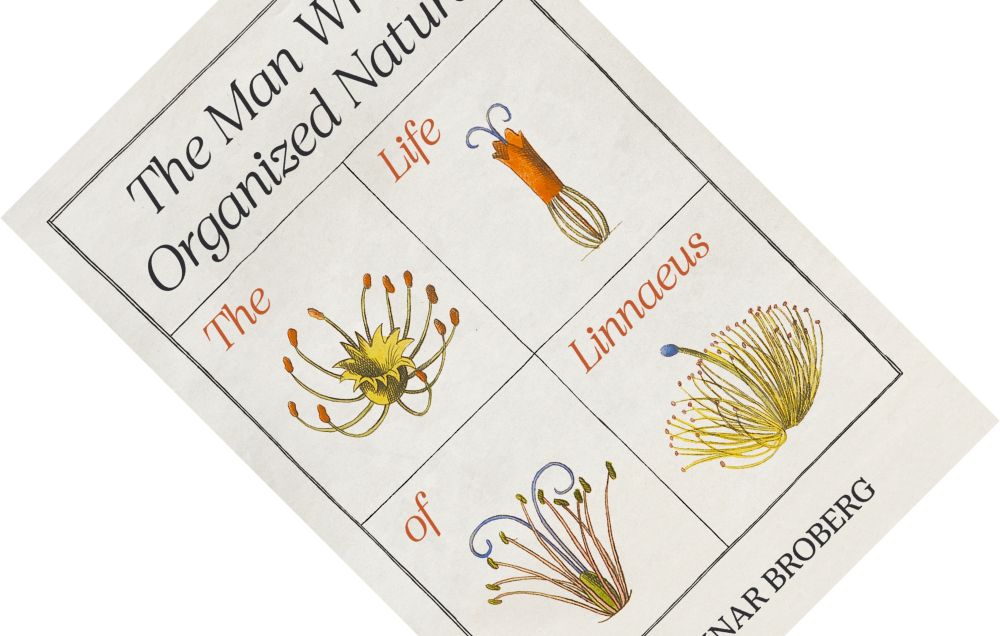
The Man Who Organized Nature: The Life of Linnaeus, written by the late Gunnar Broberg, published by Princeton University Press in September 2023 (hardback, 484 pages)
In the history of science, Linnaeus is an interesting case. On the one hand, until the publication of Broberg’s book, you would struggle to find a biography on him in a good bookstore compared to, say, a Charles Darwin. On the other hand, during the more than two centuries since his death, there have been numerous biographies, in addition to the multiple autobiographies he wrote in life. You could do worse than start by reading the “Sources and Literature” section where Broberg helpfully gives “a quick and hence unfair overview” (p. 438) of ten influential biographies, starting with Dietrich H. Stoever’s 1792 book, praising Thore M. Fries’s 1903 two-volume work as “unbeatable for detailed, factual knowledge and sheer love of its subject” (p. ix), and ending with Lisbet Rausing-Koerner’s 1999 Linnaeus: Nature and Nation. Point is, most of these books are decades or even centuries old, not readily available, and often written in Swedish. Even Broberg’s book was originally published in Swedish in 2019 as Mannen som Ordnade Naturen by Stiftelsen Natur & Kultur. Anna Paterson, a seasoned translator with an academic medical background, is almost invisible; there is no note or preface from her hand, nor any mention of her in the acknowledgements. Broberg sadly passed away in 2022 and it is unclear if she translated it posthumously or had the opportunity to still work with him. Since I do not speak Swedish, it is hard for me to comment on the quality of the translation. However, Swedish professor Hanna Hodacs is of the opinion that Broberg’s voice, so present in the original, is sometimes a bit lost in translation.
that Broberg’s voice, so present in the original, is sometimes a bit lost in translation.
Classifying and organizing things was second nature to Linnaeus and various scholars have discussed his psychology. He was a genius but also a workaholic, with some suggesting he suffered from bipolar disorder and Broberg wondering if he had ADHD. His father, a church minister, had an extraordinary interest in botany and instilled a love for plants in Carl from a young age. At school, his teacher Johan Rothman supposedly had a big influence by introducing him to an essay about plant sexuality[1]. At the University of Uppsala, he befriended Olof Rudbeck who knew the local flora better than anyone else. Later he landed a position managing George Clifford’s botanical garden in the Netherlands for over two years. Basically, there was a mentor or patron ready to encourage his passion for plants at every other turn, despite his many other interests. Several key taxonomical works Linnaeus wrote were Systema Naturae (1735), which laid out his ideas on taxonomy; Genera Plantarum (1737), which described all plant genera known to him at the time; and Philosophia Botanica (1751), which contained the first published description of binomial nomenclature. The first two titles would go through numerous editions and their continuous revision occupied much of his later life. Systema Naturae would swell from twelve large pages in its first edition, to a 2,300-page, three-volume behemoth in its twelfth edition (1766–1768), offering a complete taxonomic classification of all minerals, plants, and animals then known.
“Remarkably, Linnaeus’s binomial nomenclature seems to have been an accidental invention.”
Remarkably, Linnaeus’s binomial nomenclature seems to have been an accidental invention: “The expert William T. Stearn proposed![]() —and others agree with him—that the two-name approach was practically a byproduct that emerged by chance out of the main task he had set for himself” (p. 291). Its first use seems to have been in the 1749 dissertation Pan Svecicus, possibly to save space rather than replace the traditional, unwieldy polynomial Latin descriptions. Linnaeus soon realised and championed its potential: it made names easier to remember, saved space in writing, increased precision, was internationally comprehensible (because Latin), and universally applicable. That said, it was not immediately embraced by everyone: “Many took exception to his rather dictatorial manner and were especially offended by his assumption of a sovereign right to restructure plant nomenclature” (p. 129, quoting biographer Arvid Uggla). In particular, there was a long-running disagreement between him and French philosopher Georges-Louis Leclerc Comte de Buffon that “did not deal in petty details—grand issues were at stake: essentialism and Aristotelian teleology, the reproduction of plants, the concept of species […]” (p. 283). Interestingly, as time progressed and their views developed, “their areas of disagreement kept shifting” (p. 284). It is a story that is explored in more detail in my next review of Every Living Thing.
—and others agree with him—that the two-name approach was practically a byproduct that emerged by chance out of the main task he had set for himself” (p. 291). Its first use seems to have been in the 1749 dissertation Pan Svecicus, possibly to save space rather than replace the traditional, unwieldy polynomial Latin descriptions. Linnaeus soon realised and championed its potential: it made names easier to remember, saved space in writing, increased precision, was internationally comprehensible (because Latin), and universally applicable. That said, it was not immediately embraced by everyone: “Many took exception to his rather dictatorial manner and were especially offended by his assumption of a sovereign right to restructure plant nomenclature” (p. 129, quoting biographer Arvid Uggla). In particular, there was a long-running disagreement between him and French philosopher Georges-Louis Leclerc Comte de Buffon that “did not deal in petty details—grand issues were at stake: essentialism and Aristotelian teleology, the reproduction of plants, the concept of species […]” (p. 283). Interestingly, as time progressed and their views developed, “their areas of disagreement kept shifting” (p. 284). It is a story that is explored in more detail in my next review of Every Living Thing.
Given that Linnaeus would be remembered for plant taxonomy and binomial nomenclature, it is remarkable how few pages are spent here describing them. At the time, it was not obvious. While lecturing in botany in 1739 he was also preparing to start studying medicine in 1740, except that dissecting bodies did not agree with him. The numerous journeys exploring different counties in Sweden, from Lapland in 1732 to Skåne in 1749, provided raw data on plant biodiversity but had a markedly utilitarian character. Linnaeus and his sponsors were primarily interested in drawing up an inventory of useful plants to improve the Swedish economy. Broberg makes a point of repeatedly placing Linnaeus in the political and economic context of his time: he grew up in the aftermath of the Great Northern War against Russia and witnessed poverty, famine, and disease. His aim was to help people better provide for themselves, writing in a letter that “He who knows the herbs will never have to lose his life should a poor harvest strike the land again” (p. 265). He was particularly interested in cultivating foreign crops likely to thrive in Sweden’s climate. The tea plant was high on his wishlist (courtesy of his growing addiction), and there is an amusing description of a decades-long attempt at growing mulberry trees to host silkworms and kickstart a native silk industry. The project ultimately failed and produced little more than “a collection of small and exceedingly expensive pieces of cloth” (p. 268).
“Linnaeus was a polymath [and] Broberg accommodates this by part-way through abandoning his chronological approach in favour of a larger number of shorter chapters”
Linnaeus was a polymath, and one of his biographers, Knut Hagberg, in 1939 jokingly wrote that “it should be perfectly possible to write an exhaustive and satisfying study of Carl Linnaeus if the author…” (p. 437) followed by a long list of subjects and languages this hypothetical biographer should be qualified in. Broberg accommodates this by part-way through abandoning his chronological approach in favour of a larger number of shorter chapters, sometimes just four pages long. This collection of vignettes touches on a wide range of topics: his interest in medicine and dietetics (the science of how nutrition affects health), his family life, his religious and philosophical outlooks, his lectures and numerous dissertations, his followers, his thoughts on economics, on nature and culture, and on the value of curiosity, his knowledge of geography, the languages he spoke, the books he published, etc., etc.
Another highlight of this biography is the attention Broberg pays to the old Linnaeus. In his eyes, most writing has focused on the achievements of the young man. Importantly, even though his mind would ultimately fail him, his intellect never stalled and he remained interested in new developments. Thus, he initially posited that species had been created by God as static entities. When a student returned with a hybrid plant he was initially skeptical but soon accepted hybridization and gathered more examples in his 1751 dissertation Plantae hybridae, shifting his focus to genera as the more stable entity. He was fascinated by the borderlands between different groups, even as it “made any notion of a simple hierarchy harder to maintain” (p. 282). What to make of corals? In the 1720s, Linnaeus still considered them plants, but by 1748 he had accepted the view that they were animals. Further discoveries came courtesy of the microscopists who were revealing previously unseen worlds. Though he never used a microscope and preferred to rely on traits observable with the naked eye or, at most, a hand lens, he was keenly interested in these new developments.
“The Man Who Organized Nature offers a full immersion in Linnaeus’s life and for readers desiring a thorough take on its subject that does not skimp on the detail, this is an unparalleled book that delivers in spades.”
Linnaeus could sometimes not help himself, coining species names to insult rivals. Broberg notes that his biographer Fries countered some of these allegations, “keen to save the reputations of his heroes” (p. 235). However, given that Broberg was a Linnaeus scholar who published on him since the 1970s, one might reasonably ask if he too was too close to his subject. Linnaeus was famously averse to travelling over water and later in life instead sent disciples on global collecting expeditions, a third of whom died. Broberg describes how these journeys have been judged both positively and negatively, but refrains from passing judgement himself. Furthermore, Linnaeus has been charged with laying the foundation for racist pseudoscience by creating categories for different human populations that would later be labelled races. Broberg is mild: “Labels such as “racism” and “racist” are frequently misleading when applied to circumstances and people in the past; such judgments should surely be adapted to the time and the available knowledge” (p. 299). He would rather highlight that Linnaeus classified all humans as part of the animals, ranked Native Americans higher than Europeans, was unequivocally positive about the Sami, was not into craniometry or any attempt to sort people by intelligence, and never said or wrote anything anti-Semitic. Is that good enough? I will have to put a pin in this topic for now and return to it in my next review.
Who is the target audience of this book? Looking at the list of sources—documents in libraries and collections, Linnaeus’s writings, and a lot of secondary Swedish literature—it is clear that this is a serious and scholarly biography. Broberg includes many Latin phrases without always translating them and there are numerous references to classical and 18th-century literature and thinkers only familiar to educated readers. You would almost forget that the book was not initially written in English except for the references to Swedish places, events, and people that will not be familiar to an international readership. Broberg does not often explain them and the translator only once or twice adds context. Additional maps would have been useful to get a better idea of the geography and distances involved. Basically, the book throws you in at the deep end from the get-go and I can see that it might intimidate lay readers. The Man Who Organized Nature offers a full immersion in Linnaeus’s life and for readers desiring a thorough take on its subject that does not skimp on the detail, this is an unparalleled book that delivers in spades. For science historians, there is the additional bonus of the translation unlocking a large body of Swedish literature. I commend Princeton University Press for making it available to an Anglophone audience: readily available coverage of Linnaeus was long overdue.
Finally, Linnaeus was of course not the only naturalist collecting and naming biodiversity at this time. I have read some complaints that this book does not look at scientific developments since Linnaeus, nor at how relevant his ideas are to taxonomy today. Though true, the task of writing “just” a biography is formidable and Broberg’s exclusive focus on this is perfectly defensible in my opinion. Having now thoroughly acquainted myself with the details of Linnaeus’s life, the next review of Every Living Thing will zoom out and take in this wider history, using the Linnaeus–Buffon rivalry as its leitmotif.
1. ↑ Chapter 22 addresses Linnaeus’s “lively interest in sex” (p. 247) and the way the academic community has accepted the narrative that his contemporaries were scandalized. Broberg considers this a mostly ginned-up picture of Linnaeus; plenty of contemporaries took the poetic metaphors in his work on plant sexuality in stride and “the notion that female readers found it especially challenging has been repeated but actually seems to be a later construct” (p. 247).
Disclosure: The publisher provided a review copy of this book. The opinion expressed here is my own, however.
Other recommended books mentioned in this review:
__________________________________________________________________
__________________________________________________________________

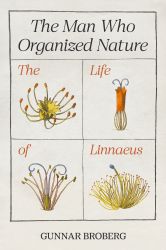
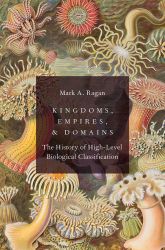
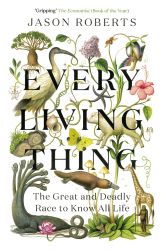
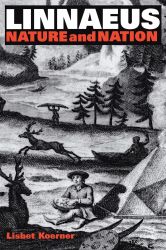
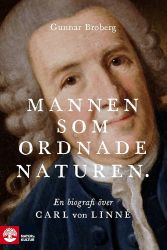
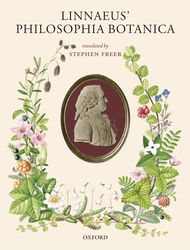
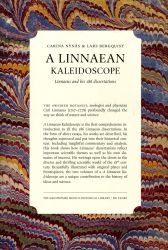
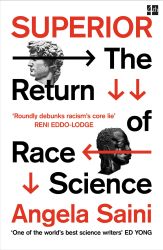
4 comments